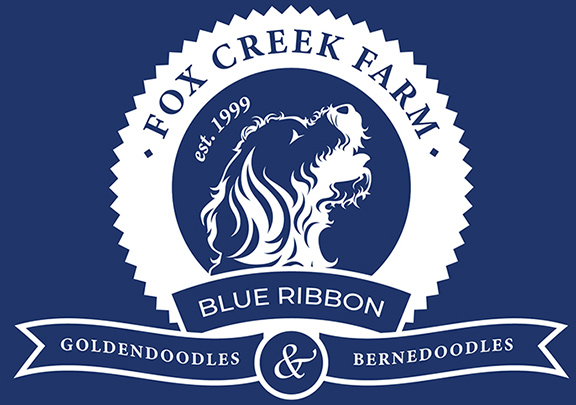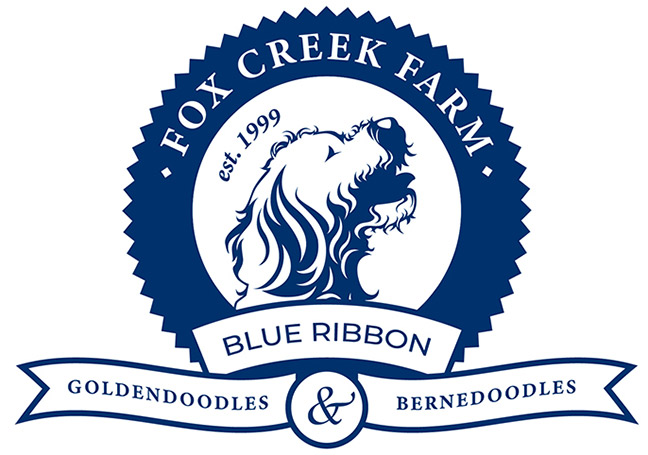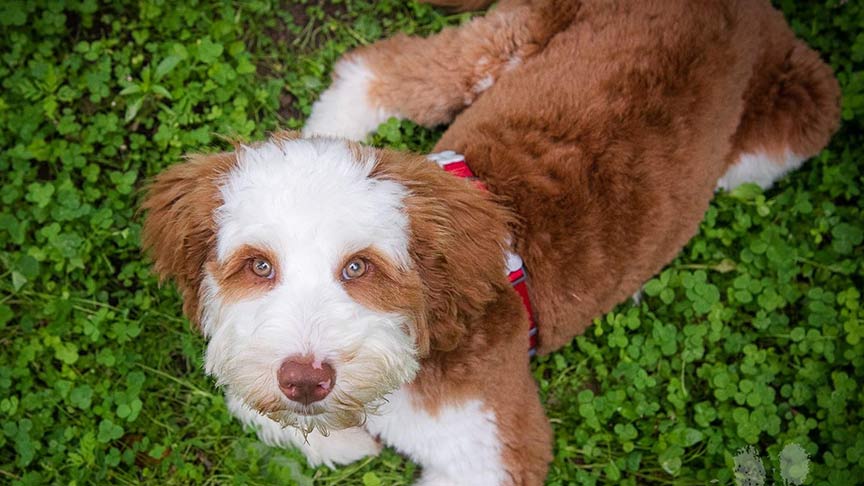
Potty Training Your Goldendoodle: Where to Start?
Goldendoodles are highly intelligent dogs and they have a great desire to please their humans. A Goldendoodle’s personality is just the right mix of the fun-loving Golden Retriever and the sophisticated Poodle, but this doesn’t make them different from any other puppy when learning about potty training. Figuring out the best routine for house training your puppy effectively helps ensure a happy life together with your new fur baby.
Most dog parents would agree that potty training a puppy is one of the hardest things to teach. It takes weeks if not months of dedication and consistency and is highly dependent on you not letting your guard down. There will be unavoidable accidents in the house, but the more accidents you allow to occur, the longer the process will become. All in all though, I have found intelligent breeds like the Goldendoodle are the easiest to housebreak. We’ve found the information below to be extremely helpful steps in potty training your dog.
How Long Does It Take to Potty Train a Puppy?
While an old dog can still learn new tricks, it is best to start potty training your Goldendoodle the moment he comes home to you. The longer you wait, the harder it becomes as you never want to be working to change bad habits, but instead, creating good habits from day one. Unfortunately, failing the potty training of a puppy is one of the main reasons why pets end up in shelters.
While Goldendoodles are known for being very quick learners, you can’t expect a puppy to be reliably potty trained any sooner than four months of age, and that is only if you have been extremely diligent in avoiding accidents. Most puppies need the first six months to master this task. You cannot consider your dog a graduate of the potty training academy until he has been accident-free for at least a month. Even then, accidents can occur if you miss his queue or leave him indoors beyond his limit.
The Process of Potty Training Your Goldendoodle Puppy
To successfully house-train your puppy, you must arm yourself with patience, a crate with an adjustable partition, some baby gates, and cleaners that remove the smell of urine when accidents occur. Once an area is scented with urine, it attracts the puppy to the same area to do its business again and again.
One of the most challenging and time-consuming things to teach your puppy is the art of going potty in the right place – outside. You will need to dedicate the first few weeks to watching him like a hawk and taking him outside at least once an hour when he is enjoying playtime. You’ll need to plan your schedule around the needs of your puppy.
You will need to close doors to other rooms and baby gates off access to areas where your puppy may be able to get out of your sight. Puppies tend to go around corners or into other rooms to relieve themselves and if you don’t catch them in the act, the damage is done. The puppy now thinks this is the appropriate place to potty and he will go there again and again. By missing the accidents, you have essentially “approved” the spot as an acceptable bathroom area. If you cannot effectively remove access to other rooms, then you can attach a six-foot lead to your puppy and your belt. Then he cannot get out of sight and you can’t forget about him as you move around your home or even when you are relaxing.
When arriving home to a crated puppy, always pick him up as soon as you open the crate door and carry him outside to the designated potty area. Allowing him to follow you out after holding it for more than one hour is allowing him to have an accident on the way to the door. Puppies will not go potty while being carried, so use this trick to get him outside after being confined to his crate.
Your puppy will eventually choose a way to signal to you that he needs to go outside. These signals will likely be walking or pacing by the door, barking at the door, sitting at the door, or scratching at the door. You can teach your puppy a better option which is called bell training which will always get your attention. Hang a bell on a rope on the doorknob of the door you always use to go outside for a potty break. Make sure it hangs low enough for him to reach it with his nose. This door should be in a room where you spend most of your time with your puppy. He will not easily learn to go find another door to the outside if it is not within sight of where he spends most of his time. Each time you take your puppy out the door, stop and use his nose to make the bell ring. Immediately open the door so he learns that the sound of the bell makes the door open. Usually, within days, the puppy is successfully ringing the bell when he needs to go potty. Keep in mind that he may abuse this newly learned trick by asking out just to play. Follow his queue each time simply because you will quickly “untrain” him to use the bell if it stops making the door open.
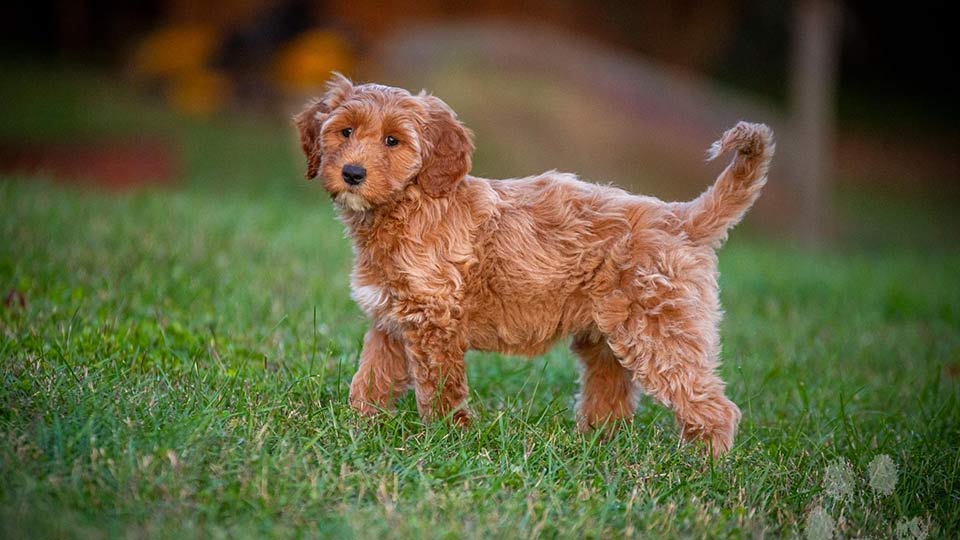
Get to Know Your Puppy
Most puppies will need to eliminate shortly after each meal. Make sure it becomes your normal routine to have a potty break outside after eating. Also, note his mannerisms when it has been more than one hour since his last outing. Until he learns to communicate his needs to you, you may find him walking towards the door, sitting near the door, whining, circling, sniffing, or squatting. Any of these actions require you to immediately pick him up and get him to his designated area. As such, you must take note of your puppy’s motions and how he communicates them to you. Once you’ve learned this, it will help to prevent future accidents that occur simply because you forgot what time he last eliminated.
Keep Your Dog on a Consistent Feeding Schedule
Food and water consumption are the reason why your puppy needs to eliminate. Adhering to a regular feeding routine ensures that you can monitor their food and water intake. Monitoring your puppy’s intake will help you better predict his bathroom needs as you can get a more consistent estimation of how long it takes before your Goldendoodle has to go potty again. You may wish to offer access to water only at mealtimes and specific times in between meals as this will give a better indication of necessary potty times. An ample drink of water may render a potty break within 10-15 minutes in a young puppy as his bladder is very small and cannot hold much.
Give Commands
Choose a single command to indicate that you want your Goldendoodle to do his business. You can use commands such as “go potty”, or “go pee”, and the like. Just make sure to be consistent with the command you use to avoid confusion and to imprint the result you are seeking. You can also use loud words like “no” or “stop” to interrupt him from doing his business if an accident seems imminent. Even if the accident still occurs, pick him up and take him outside to his potty place to instill in him that what he did was in the wrong place.
Use Positive Reinforcement
Positive reinforcement is the act of rewarding your dog when he does things right, therefore introducing him to positive stimuli. I do not recommend providing a food reward when a successful potty event occurs outside. I find puppies many times will potty inside seeking a food reward as they don’t associate the reward with pottying in the right place, but instead for the act of pottying. I much prefer offering happy and encouraging words in a fun voice such as “good puppy!” or “yes!” while rubbing their head or chest.
Clean Your Dog’s Accidents Properly
Accidents and nervous wetting are inevitable, especially for young puppies. When an accident occurs (and it will!), make sure to clean it up using a pet cleaner solution. Prevent your puppy from having access to rooms where he has had multiple previous accidents. Close the door to that room or use a baby gate to avoid access. You are, in effect, closing the bathroom door.
Crate Your Puppy During Unsupervised Times
A crate is a safe space for your puppy. The perfect crate has enough space for your puppy to stand, lay down, and move around comfortably. However, you must make sure that the crate isn’t big enough to allow your Goldendoodle to use one side to sleep and the other to conduct his business. You can purchase a crate with an adjustable partition to allow the crate to “grow” with your puppy. You should use the crate to crate train for unsupervised times. Since it is your puppy’s den, he will be reluctant to do his business inside of it.
However, you must make sure to teach him not to associate the crate with punishments. It is his castle, his safe place, and he will be spending a lot of time there. It should always have safe chew toys inside so it is a fun place and not a jail cell. As your puppy shows you he won’t soil the area available, you can increase the space by a few inches every few days by adjusting the partition. If an accident occurs inside the crate, downsize to the previous location of the partition and try again a few days later to allow a slightly larger space.
Getting Through the Night With Your New Puppy
It is recommended you place the crate next to your bed on night one. Keep your puppy awake until you plan to go to bed. Take him out for a bedtime potty break, then place him in the crate with a few non-squeaky toys. A Snuggle Puppy is a great option to help him feel secure. Close the door, lay down in bed, and listen to him cry and whine. You can drop your hand down to the gate and allow him to see and smell that you are close by, but do not open the crate for a minimum of three hours. Your puppy will likely fall asleep in a matter of minutes but may wake crying shortly thereafter.
Allow your puppy to cry himself asleep again and only take him out for a potty break if three hours have passed since the last outing AND he is waking you. Never wake a sleeping puppy! Each night, the crying should be shorter and the sleeping should be longer. Typically within a week, you will wake one morning realizing that you and your puppy slept all night without a potty break. Know your puppy needs to go out quickly when he does wake you that morning, so don’t delay getting out to his spot.
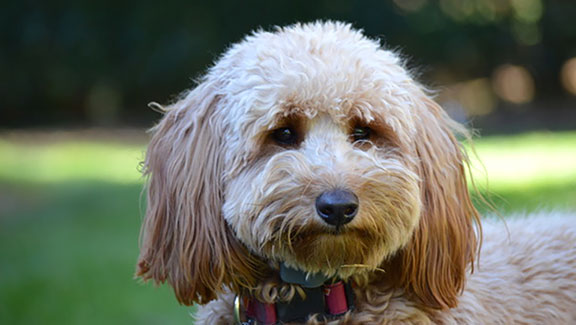
Sample Schedule for a New Puppy
For puppies 2-6 mos. old eating 2-4 meals per day; the owner can get home at lunch. For those that have family members home during the day, the puppy should spend one three-hour stretch in the crate and have more supervised interaction outside the crate than this schedule shows.
7:00 am Take pup out. Don’t wait until you shower or until the coffee is made.
7:15 Kitchen playtime.
7:30 Feed and water. Allow 15-20 min. for eating, then remove the dish.
8:00 Take the pup out. Confine to a crate when you leave; place safe chew toys in the crate for entertainment. If you will remain home, allow your puppy to have supervised playtime and take them outside every 45-60 minutes to eliminate.
Noon Take pup out if arriving home on lunch break.
12:15 Kitchen playtime.
12:30 Feed and water.
12:45 Take pup out.
1:00 Confine to a crate when leaving. It is beneficial to have the puppy take a rest in its crate/enclosure while staying indoors.
4:00 Take pup out of home.
5:00 Take pup out if just arriving home from work.
5:15 Kitchen playtime.
5:30 Feed and water.
5:45 Take pup out.
6:00 Supervised playtime for the remainder of the evening taking the pup out every 45-60 minutes.
7:30 Feed and water.
7:45 Take pup out.
8:00 Keep puppy up and awake until bedtime taking the pup out every 45-60 min.
11:00 Take the pup out. Confine to crate overnight.
This is just a sample schedule to give you an idea of the time involved in housetraining a puppy. When possible, your puppy should not be crated once you are home for the evening. This is when you spend quality time with him and work on basic obedience.
Great Tips When You Potty Train a Goldendoodle Puppy
1. Take time off from work to dedicate to potty training your puppy when he first comes home. You are going to lose some sleep while your puppy is settling into his new environment and he is learning to be an only puppy. It may be difficult to maintain a normal work schedule when you are getting up in the middle of the night or having to deal with periods of a crying puppy.
2. A puppy’s daytime crate confinement limit is 3 hours at 8 weeks of age and can be increased by one hour each month. However, after a 3 hour period of confinement, a puppy should have a minimum of one hour of play time before being confined again if at all possible.
3. Take your puppy out for potty breaks to the designated area when appropriate and do not play with your puppy during the potty break outing. You don’t want to distract him from the task at hand. He may need to go potty a few times in one outing to completely empty his bladder.
4. Have a special spot for your Goldendoodle puppy to potty. Bring your puppy to an area he’s used before so he understands that this is where he’s supposed to go.
5. Until your puppy has demonstrated bladder control, always pick them up from their crate and carry them outside for potty breaks to avoid accidents.
6. Always bring your puppy back inside immediately after a potty break is completed. If you want to have yard play time or go for a walk, don’t mix it with the potty break. Come inside and then go back out to a different area for playtime.
7. Avoid submissive urination. Some dogs are more sensitive than others and may end up squatting when excited. Do not scold your puppy for this action as that will make matters worse. Keep calm when greeting them, avoid eye contact until you get them outside, and know that they will likely outgrow this behavior.
In conclusion, potty training a dog requires patience and careful observation. The Goldendoodle temperament allows this breed to respond well to positive reinforcement so use that to your advantage.
